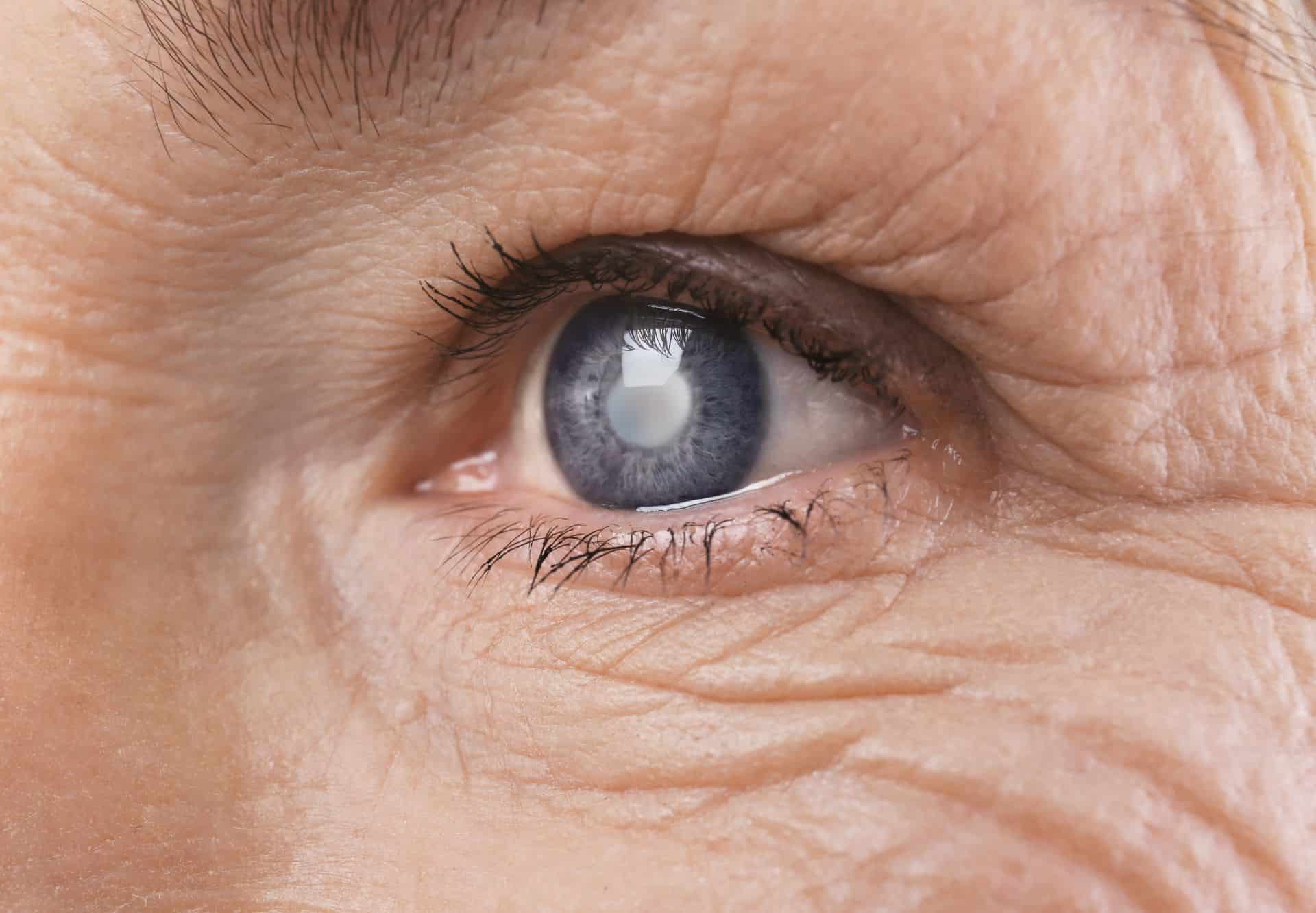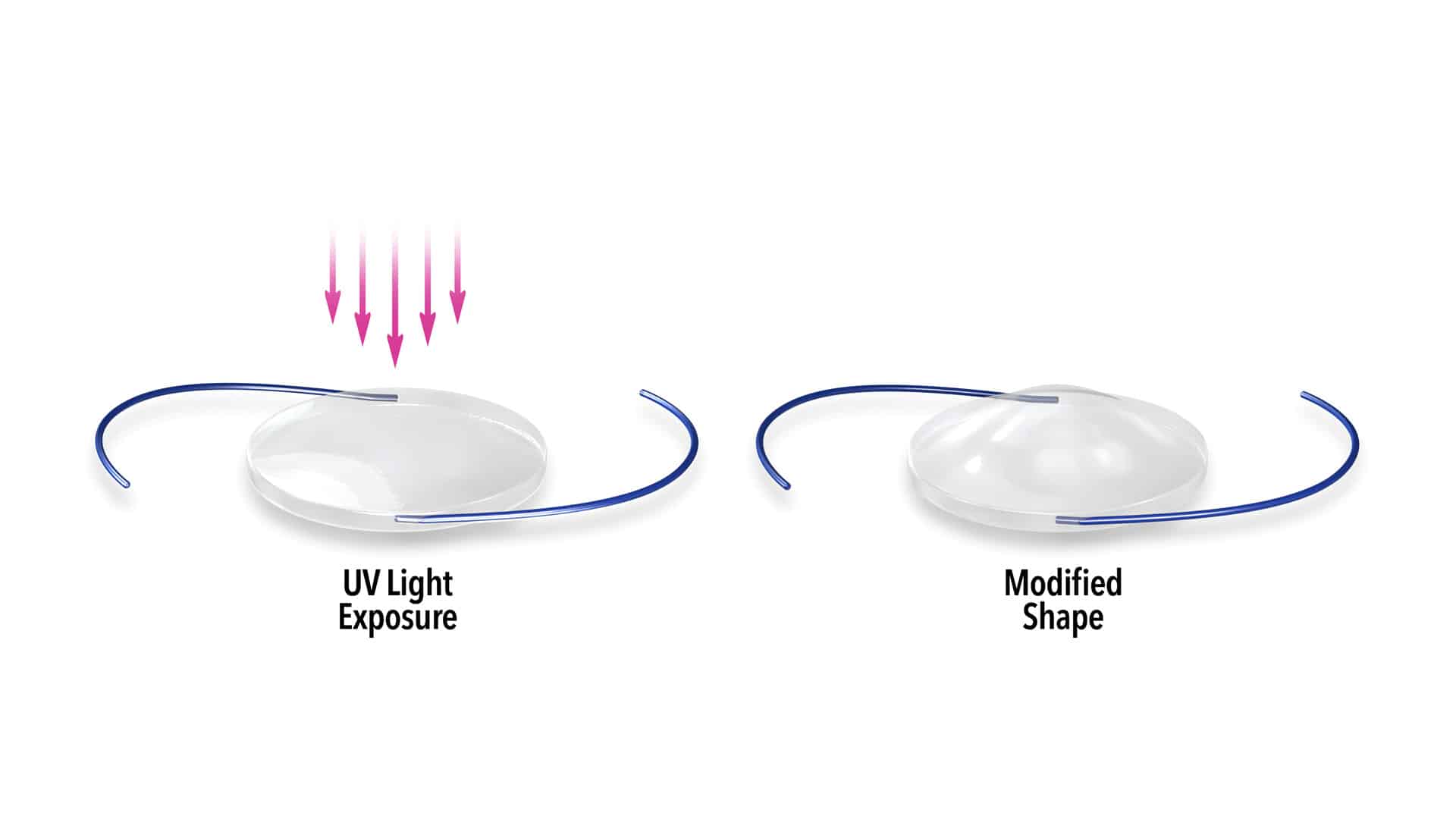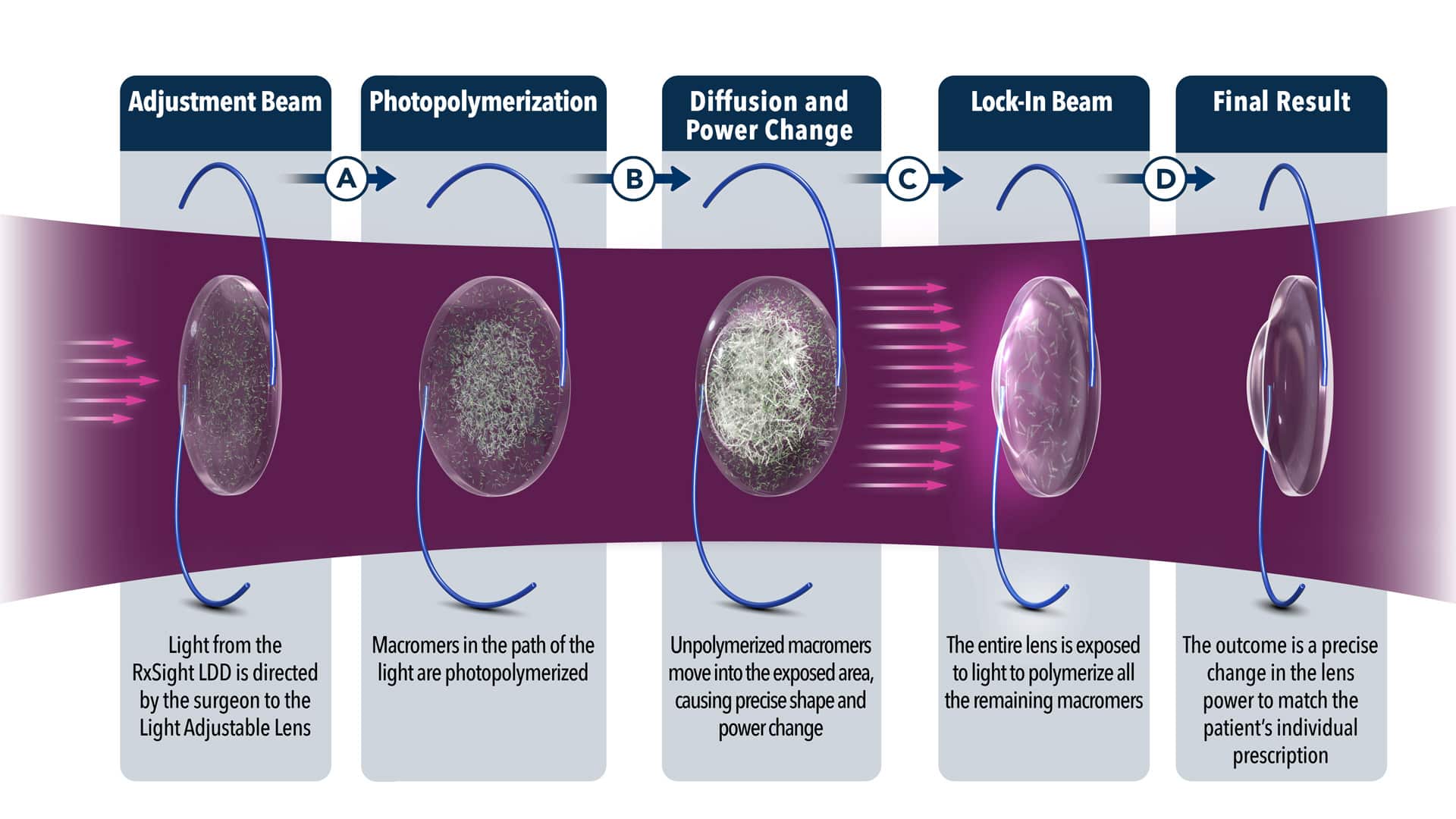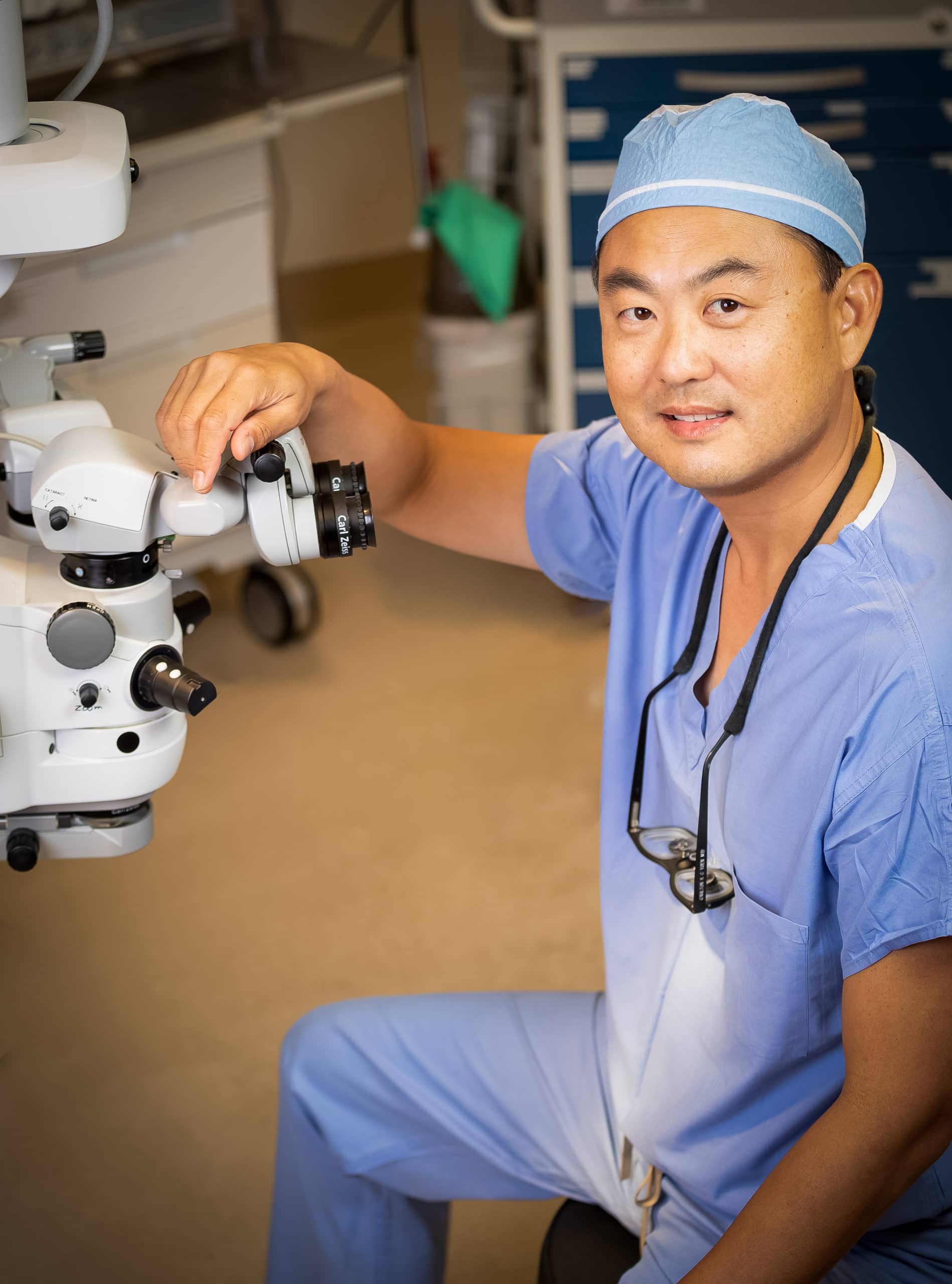
Unlocking a Clearer Future:
LAL Procedure at Eye Doctors Hawaii
At Eye Doctors Hawaii, under the experienced guidance of Dr. Chang, we’re proud to introduce a groundbreaking solution for cataract patients: the Light Adjustable Lens (LAL).

Understanding Cataracts
Cataracts are a common eye condition where the natural lens in our eye becomes clouded, leading to blurred or dim vision. As we age, the proteins in our eye lens may start to clump together, creating the cloudiness characteristic of a cataract. This clouding can interfere with the clarity of our vision, making daily activities like reading, driving, or recognizing faces increasingly challenging.
Understanding Cataracts: The Cloud Over Clarity
Vision is one of our most valued senses. But as we age, many of us face the inevitable challenge of cataracts. Cataracts are formed when the naturally transparent lens of our eye begins to cloud. Imagine trying to peer through a fogged-up window; that’s how a significant cataract might feel. The proteins in the eye lens cluster together, leading to this cloudiness, blurring our vision and making tasks like reading or driving more difficult.
Enter the Light Adjustable Lens (LAL)
Historically, treating cataracts meant the removal of the clouded lens, replaced by an artificial one. This solution, though effective, often lacked the finesse of natural vision. The Light Adjustable Lens (LAL) brings innovation to this arena. When Dr. Chang implants the LAL, the magic doesn’t just stop there. This lens is adjustable post-surgery. Using specialized light treatment, the power of the LAL can be refined, granting patients a vision tailored for their unique eyes.

The LAL Difference
- Tailored Precision: Every eye is different, and with LAL, patients aren’t boxed into a one-size-fits-all solution. After the implantation, adjustments can be made to the lens, ensuring vision clarity matches each individual’s lifestyle and requirements.
- Reduced Dependence: One of the common concerns post-cataract surgery is the dependence on glasses. LAL’s precision often decreases the need for corrective lenses post-operation, giving many the freedom they haven’t experienced in years.
- Safe and Swift: With Dr. Chang’s expertise at Eye Doctors Hawaii, patients can expect a procedure that’s not only efficient but also has a quick recovery time compared to traditional surgeries.

Empowering Patients with Choices
Medical decisions, especially concerning our vision, can be daunting. But at Eye Doctors Hawaii, under Dr. Chang’s guidance, patients are equipped with knowledge and choices. Besides the cutting-edge LAL, several lens implant options might be more suited to certain individuals. Dr. Chang believes in a patient-centric approach, ensuring you’re not just informed but also comfortable with the decisions you make about your vision.
The Future of Vision Care
With advancements like the LAL, the future of vision care is not just about restoring sight, but enhancing it. At Eye Doctors Hawaii, we’re at the forefront of these innovations. Our commitment is clear – to provide vision solutions that are not just cutting-edge but also deeply personal.
The LAL is not just a procedure; it’s a testament to how far we’ve come in eye care, and a hint of the exciting future that lies ahead. With Dr. Chang’s skilled hands and the advanced technology at Eye Doctors Hawaii, clearer, brighter days are not just a hope; they’re a promise.

Frequently Asked Questions About LAL
What is the LAL procedure?
Answer: The LAL (Light Adjustable Lens) procedure involves implanting a specialized lens during cataract surgery. Unlike traditional lenses, the power of LAL can be adjusted post-surgery using light treatment to optimize vision for each individual.
How does LAL differ from traditional cataract surgery?
Answer: Traditional cataract surgery replaces the clouded lens with a fixed power artificial lens. LAL, on the other hand, offers an adjustable lens that can be fine-tuned post-surgery, ensuring a more personalized vision outcome.
Will I still need glasses after the LAL procedure?
Answer: One of the significant benefits of LAL is its precision, which can reduce the dependency on reading glasses or bifocals post-surgery. However, individual experiences may vary, and some patients might still prefer glasses for specific tasks.
How safe is the LAL procedure?
Answer: The LAL procedure, especially under the guidance of experienced professionals like Dr. Chang, is considered safe. As with any medical procedure, potential risks exist, but these will be discussed in detail during your consultation.
How long is the recovery time after LAL surgery?
Answer: Most patients experience a swift recovery and can return to their regular activities within a few days. However, the exact recovery time may vary based on individual factors and the exact nature of the surgery.
How is the lens adjusted post-surgery?
Answer: After the LAL implantation, specialized light treatments are used to adjust the power of the lens. These non-invasive adjustments ensure optimal vision, tailored to the patient’s unique needs.
Can LAL be used for patients without cataracts?
Answer: Currently, LAL is primarily used for cataract patients. However, every individual’s needs are different. It’s essential to consult with Dr. Chang to discuss suitability and other potential vision solutions.
Are there any side effects to the post-surgery light treatments?
Answer: Light treatments for LAL adjustments are generally safe and well-tolerated. Minor side effects may occur, but they are typically temporary. Dr. Chang will provide detailed information during your consultation.
Who should not receive this treatment?
Answer: The Light Adjustable
Lens and LDD system should not be used if you are taking
medications that may increase your sensitivity to ultraviolet
(UV) light; if you are taking a medication that is considered
harmful to your retina; if you have a history of herpes eye
infection or uncontrollable eye movements (nystagmus); or if
you are unable to comply with your doctor’s schedule of LDD
light treatments and instructions for wearing special UV-pro–
tective glasses for several weeks following cataract surgery.
What warnings should I be aware of?
Answer: Preexisting macular
disease and certain eye conditions may increase the risk of
complications. Your doctor will determine if you are a good
candidate for the Light Adjustable Lens. If you have any
complications during your cataract surgery before the Light
Adjustable Lens is implanted, you may need to have another
intraocular lens (IOL) implanted instead of the Light Adjust–
able Lens.
What precautions should I be aware of?
Answer: The safety and
effectiveness of the Light Adjustable Lens and LDD have not
been established in patients with certain preexisting eye con–
ditions or in patients who experience certain complications
during cataract surgery. You should discuss these issues with
your doctor. Following surgery, you must wear the special
UV-protective glasses during all waking hours for about 4 to
5 weeks and comply with your doctor’s schedule of LDD light
treatments. Failure to wear the UV-protective glasses can
result in an unpredicted vision change or loss of vision quality
after exposure to UV light, such as from sunlight. This may
require a second surgery to remove the Light Adjustable Lens
from your eye and replace it with another IOL.
What are the potential risks?
Answer: As with any surgical proce–
dure, there are risks associated with cataract surgery and
IOL implantation. Please discuss these risks with your doctor.
Potential risks associated with LDD light treatments include
mild alterations to color perceptions; temporary scratchiness,
irritation, or dryness to the front part of your eye; and activa–
tion of a previously undiagnosed herpes eye infection. Longer
lasting and serious adverse events related to the UV light
exposure are possible, but rare. There is a small chance that
your vision could be made worse or that you may require
additional surgery as a result of a complication.

